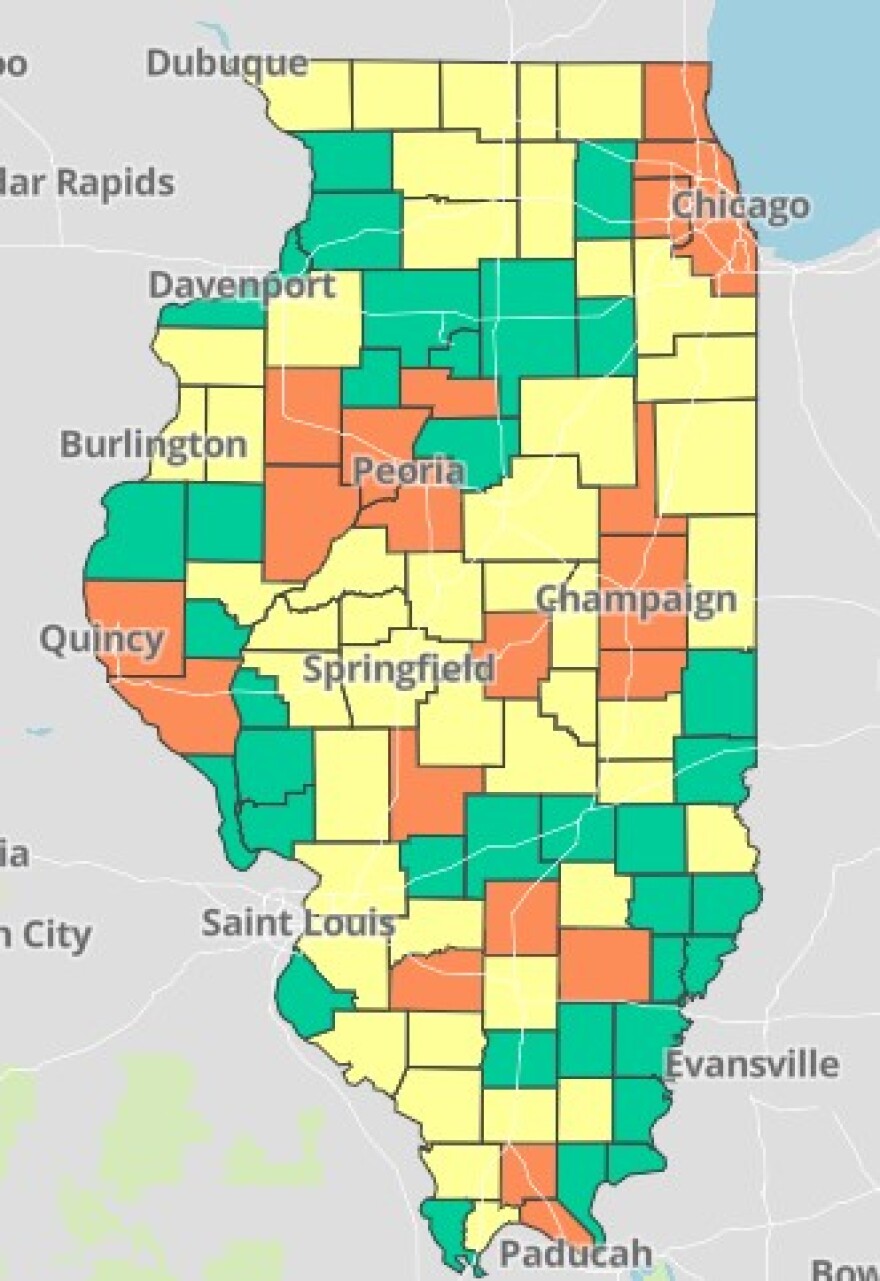Some positive news in Sangamon County, which is no longer listed as high level for community spread of COVID-19. The Illinois Department of Public Health says Sangamon County is now in the medium category. The number of positive tests has dropped in the past week. However, the county reported two additional deaths of those who contracted COVID-19.
At that level, persons who are elderly or immunocompromised (at risk of severe outcomes) are advised to wear a mask in indoor public places. In addition, they should make sure to get up to date on their COVID-19 vaccines or get their 2nd booster, if eligible.
According to the CDC, 20 Illinois counties are now rated at High Community Level for COVID-19. An additional 47 counties throughout the state are now rated at Medium Community Level.
Currently, IDPH is reporting a total of 3,407,189 cases, including 34,076 deaths, in 102 counties in Illinois since the beginning of the pandemic.
“With 67 counties at the Medium or High Community Level across Illinois, more than half of the counties in the state remain at an elevated level for community risk,” said IDPH Acting Director Amaal Tokars. “Everyone should be aware that they can play a part in limiting the spread of the virus. We should all make sure we are up-to-date on vaccinations and boosters. Parents of small children should take advantage of the newly authorized vaccines for children as young as 6 months. In areas with elevated community levels, we are all wise to put on our masks in indoor public spaces and avoid indoor crowded spaces as much as possible. If needed, contact a healthcare provider promptly to discuss what treatment is right for you.”
The counties listed at High Community Level are Cook, DuPage and Lake in northeastern Illinois; Adams, Champaign, Douglas, Ford, Fulton, Knox, Macon, Marshall, Montgomery, Peoria, Pike and Tazewell in central Illinois; and Johnson, Marion, Massac, Washington and Wayne in Southern Illinois.
CDC looks at the combination of three metrics — new COVID-19 hospital admissions per 100,000 population in the past 7 days, the 7-day average percent of staffed inpatient beds occupied by COVID-19 patients, and total new COVID-19 cases per 100,000 population in the past 7 days — to determine the COVID-19 Community Level. New COVID-19 admissions and the percent of staffed inpatient beds occupied represent the current potential for strain on the health system. Data on new cases acts as an early warning indicator of potential increases in health system strain in the event of a COVID-19 surge or new variant.
Using these data, the COVID-19 Community Level is classified as low, medium, or high.
The CDC recommends the following measures for people in areas that are rated at High Community Level for COVID-19 transmission:
* Wear a well-fitting mask indoors in public, regardless of vaccination status (including in K-12 schools and other indoor community setting
* If you are immunocompromised or high risk for severe disease
* If you have household or social contact with someone at high risk for severe disease
* Stay up to date with COVID-19 vaccines and boosters
* Maintain improved ventilation throughout indoor spaces when possible
* Follow CDC recommendations for isolation and quarantine, including getting tested if you are exposed to COVID-19 or have symptoms of COVID-19
* Wear a mask or respirator that provides you with greater protection
* Consider avoiding non-essential indoor activities in public where you could be exposed
* Talk to your healthcare provider about whether you need to take other precautions
* Have a plan for rapid testing if needed (e.g., having home tests or access to testing)
* IF YOU TEST POSITIVE: Talk to your healthcare provider about whether you are a candidate for treatments like oral antivirals, and monoclonal antibodies, consider self-testing to detect infection before contact and consider wearing a mask when indoors with them






